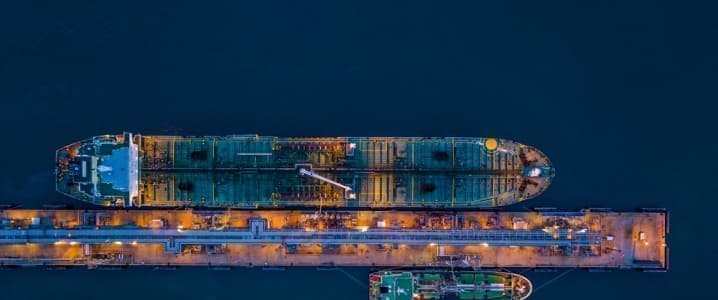Hydrogen burns completely cleanly, leaving behind nothing but water vapor, making it extremely attractive as an emissions-free fossil fuel alternative. While hydrogen receives a lot of lip service as a potential clean energy fuel solution for the global energy transition, the true picture is a bit more complicated.
Hydrogen is only as clean as the fuel that was used to create it. In reality, there is not just hydrogen, but green hydrogen, blue hydrogen, and gray hydrogen, the distinguishing feature of each being the kind of energy production that was used to produce it. By another categorization, one could say that there is green hydrogen, and then there is greenwashed hydrogen. Green hydrogen is the cleanest form of hydrogen, and therefore the most promising for a more climate-friendly energy future. It’s made through the exclusive use of renewable and emissions-free energies. Gray hydrogen, the most common form of hydrogen currently used in industrial applications, is made with fossil fuels, meaning that the low-carbon application of the hydrogen itself is essentially cancelled out by its production process. Blue hydrogen is the name given to hydrogen made exclusively with natural gas, which has lower carbon emissions and is “cleaner” than most fossil fuels.
Lesser known but also extremely promising for the global energy transition, blue ammonia is another feedstock currently under development as part of emerging green energy schemes. Ammonia is a chemical compound that contains three hydrogen molecules and one nitrogen molecule, and, like hydrogen, it releases no carbon dioxide when burned in a thermal power plant. The blue ammonia itself can be used as a feedstock for sustainable hydrogen. As the “blue” part of the name would suggest, the ammonia itself is made using natural gas (and in some cases coal), but is still considered to be a greener form of energy production thanks to its potential for carbon capture and sequestration (CCS).
And just this week the use of blue ammonia as a part of the global clean energy transition moved from being a pipe dream to a reality when the world’s largest oil company made its first ever shipment of blue ammonia.
As the Middle East Monitor reported earlier this week, “Saudi Aramco and the Institute of Energy Economics, Japan (IEEJ), in partnership with chemical manufacturing giant SABIC, have demonstrated the production and shipment of blue ammonia from Saudi Arabia to Japan with support from the Japanese Ministry of Economy, Trade and Industry.”
This landmark shipment consisted of forty tons of “high-grade” blue ammonia that will be used in Japan to generate power with zero carbon emissions. “The use of hydrogen is expected to grow in the global energy system,” Aramco’s Chief Technology Officer, Ahmad Al-Khowaiter was quoted by the Middle East Monitor, “and this world’s first demonstration represents an exciting opportunity for Aramco to showcase the potential of hydrocarbons as a reliable and affordable source of low-carbon hydrogen and ammonia. Aramco continues to work with various partners around the world, finding solutions through the deployment of breakthrough technologies to produce low-carbon energy and address the global climate challenge.”
This development on the part of Saudi Aramco is part of a larger global trend on the part of oil supermajors, who are rapidly diversifying their portfolios to include renewable energy production. As Oilprice reported in August, there is a race among oil supermajors and other energy giants to corner the market on green hydrogen, which is expected to play a major role in the future global energy mix. In fact, just this month, Australia announced that it is targeting a carbon neutral economy by 2050 and it aims to achieve that goal by leaning heavily on the use of hydrogen.
Indeed, Big Oil’s most profitable business is no longer oil, and in many leading energy sectors, oil companies are pivoting to rely far more on natural gas and renewables as peak oil looms large on the horizon. The pandemic and resulting oil price crash have only catalyzed this energy transition, as nations around the world devise green stimuli for post-COVID economy recovery and the World Economic Forum has advocated as a “new energy order” and a “great reset.”
Saudi Aramco, like so many others, is reading the writing on the wall. To remain focused solely on oil production is to be left behind. This milestone shipment of blue ammonia is just one small step forward in what is proving to be a sweeping global transition into a brave new world of climate-smart energy production.
By Haley Zaremba for Oilprice.com
More Top Reads From Oilprice.com:
- Shell May Cut Upstream Oil Operations By 40%
- Natural Gas Prices Plunge On Souring Demand, LNG Exports
- Oil Prices Slide As Libya Restarts Production


















I hate to be a stickler about this but a sentence like that written with such authority yet demonstrating a lack of knowledge of basic chemistry makes me question the rest of what is said in the article.
I offer a revision: "Ammonia is a chemical compound that is made of molecules containing three hydrogen atoms and one nitrogen atom, and, like hydrogen, it releases no carbon dioxide when burned in a thermal power plant."
An understanding of basic chemistry would be an asset when writing about the subject, but this is something that should be caught by a competent editor that is well-grounded in the subject.